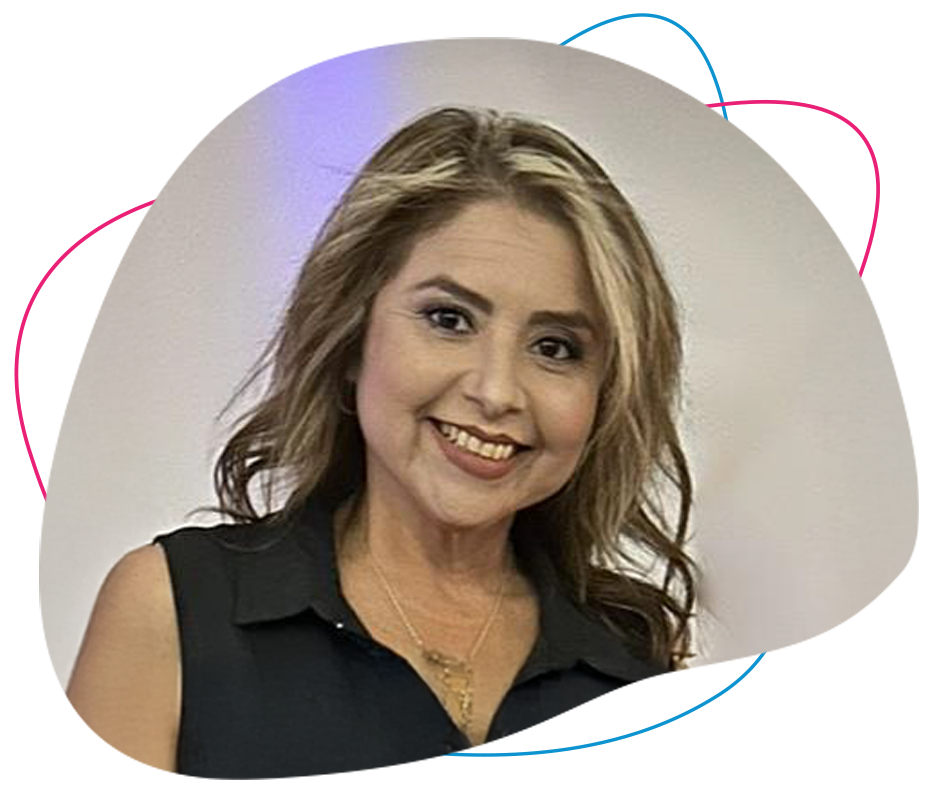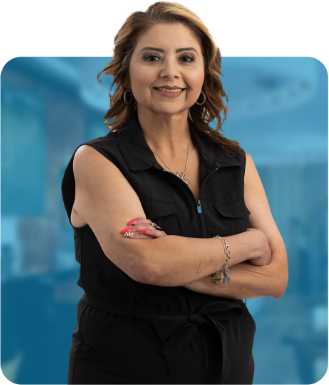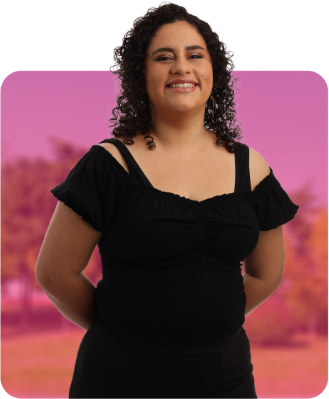ROXANNE’S STORY
patient Story
“The geneticist said medical school hadn’t really covered this
disease… so he read to us what he found online.”
Searching for an expert of a rare disease
Roxanne first heard about type 1 Gaucher disease when her sister was diagnosed. The hematologist who ordered the bone marrow test that diagnosed her sister informed her that Gaucher is a rare disease and admitted that even she didn’t know much about it. Although little information was available online at that time, Roxanne and her sister found enough to develop some questions to ask at the follow-up appointment with a geneticist.
Again, Roxanne and her sister were disappointed at how little this doctor knew about the condition. The doctor had taken a thin manilla folder into the appointment, which contained the limited information he had found online, to read to them. They searched for a different specialist, eventually finding a pediatric geneticist who was willing to consult an adult patient. The siblings had finally found an expert on Gaucher disease, who was able to answer their questions and reassure them.
patient profile
NAME: Roxanne
AGE: 50s
AGE AT TYPE 1 GAUCHER DIAGNOSIS: 42
ETHNICITY: Hispanic
TREATMENT HISTORY: VPRIV, 7+ years
SYMPTOMS AT BASELINE: Bone pain, low hemoglobin

“I hear, ‘But you don’t look sick’ all the time.”
Gaucher disease is heterogeneous; symptoms can range from mild to severe
Roxanne’s sister’s atypical test results for her spleen and liver had initially prompted further investigation, eventually leading to her being diagnosed with type 1 Gaucher disease by her doctor. The doctor recommended that Roxanne and her brother should test for type 1 Gaucher too due to the hereditary nature. Roxanne didn’t have the same spleen and liver issues as her sister so she had convinced herself that she wouldn’t have the same disease. She only recalled having bone pains and aches, and fatigue, but these had always been disregarded as due to stress or her weight. Her brother was tested and determined to be a carrier of type 1 Gaucher.
When Roxanne was tested for type 1 Gaucher disease, the results came back as positive. She was in shock and although she had seen her sister’s disease journey and knew what to expect, she was still terrified. Roxanne became very withdrawn, and worried about how her condition could progress and affect her life.
“The biggest challenge to GD1 patients may not be the aches and the pains or the tiredness and fatigue;
sometimes the challenges may be more mental or emotional.”
Emotional impact of Gaucher disease
Roxanne had established a career in looking after people and giving back to the community, but with her new diagnosis she was worried about whether she could continue working. She felt that if she needed to leave her job, she would lose a part of her identity. She felt worthless and was diagnosed with depression and anxiety.
Roxanne sought ways to connect with the Gaucher community and found support groups, but felt isolated as one of the few Hispanic people. She was able to meet more people with type 1 Gaucher at other events and found resources online to answer more of her questions.
In 2019, 2 years after her diagnosis, Roxanne reluctantly retired. She struggled with her mental health as she missed her job and being part of that community. Roxanne’s grandson was also diagnosed with type 1 Gaucher disease, and she battled with guilt and blamed herself for the condition being inherited. Roxanne is now channeling these emotions into being an advocate for herself and her other two family members with the condition, as well as for other people living with type 1 Gaucher disease.

“I don’t feel like I have to go out of my way to prepare for my
VPRIV treatments.”
Roxanne’s VPRIV infusions
After her diagnosis, Roxanne discussed the different treatment options with her doctor. Together, they decided on VPRIV. Roxanne remembers her first infusion well; she had to go to an infusion center and felt nervous and overwhelmed with the process. However, her nurse calmed her by talking through what she should expect. Now, Roxanne has incorporated her VPRIV infusions into her routine. She prefers to have her infusions at home in the morning once every other week. Once her infusions are done, she goes back to the rest of her day.
DOWNLOADABLE RESOURCE









